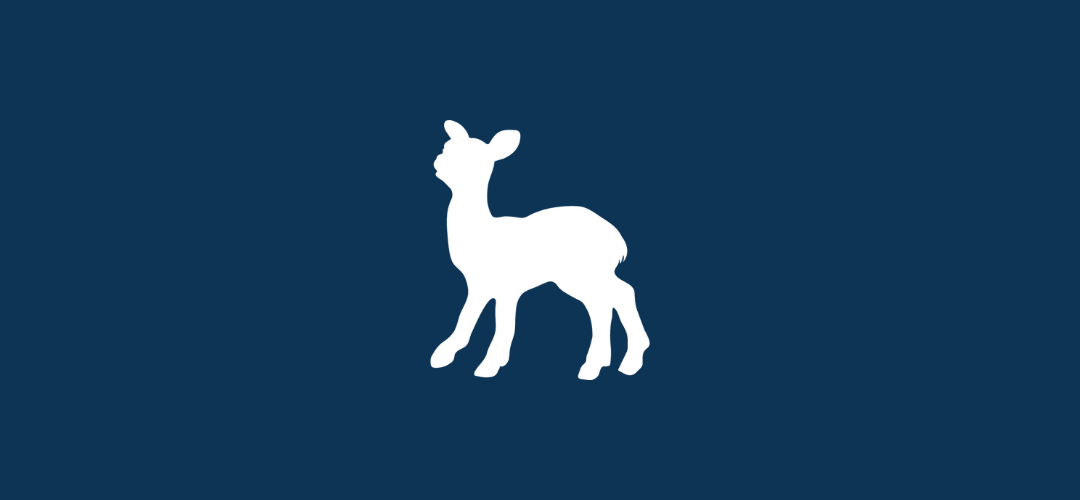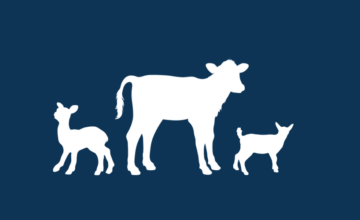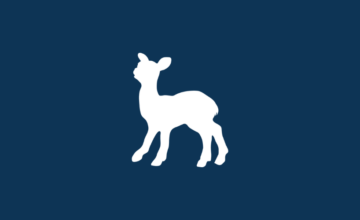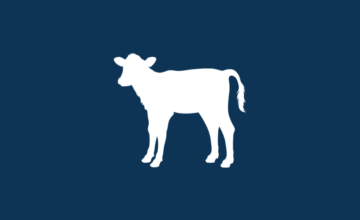Profitable lamb management
- Aug 09, 2022
- By Grober Nutrition
- In Canada
Profitability in sheep farming is largely dependent on the number of lambs weaned per ewe per year. The aim should be at least two, but high prolific breeds (e.g. Finn, Romanov) used in the breeding program can achieve and surpass this. Now it’s up to strong management practices to ensure lamb survival.
Lamb survival is a result of good ewe management before and during lambing and attention to early care of lambs. Producers with flocks having a high percentage of multiple births should consider artificial rearing as a means to save and successfully rear more lambs and increase profitability. Under good management, orphaned, mis-mothered, and multiple lambs can be successfully reared on milk replacer at an economic cost.
How to Prepare the Ewe for a Successful Lambing
The fittest lambs are born to ewes that have been maintained correctly from pre-mating to lambing. The ewe’s gestation period is from 144 to 151 days, with an average of 147 days. Weight gain is usual during pre-mating, followed by constant weight (condition score 2.5-3) between days 50-90 of pregnancy.
Nutrition needs increase significantly in the last 4-6 weeks of pregnancy and is important to support rapid fetal growth (70% of growth occurs in last 6 weeks), as low birth-weight lambs tend to have a lower average daily gain than high birth-weight lambs. Udder development for colostrum and milk production also occurs at this time.
Ewe Management at Lambing
During lambing, it is recommended to provide lambing pens that are approximately 1.5 m² (1.8 square yards), with a corner divided off to give the lamb a safe area. Pens must have dry and clean bedding for each ewe. Each ewe can expect to spend 1-2 days in this pen.
At birth, there are a few important things to remember:
- Ensure that lambs start breathing.
- Clean mucus away from the nose and mouth.
- Disinfect the lamb’s navel to prevent infection.
- Encourage lamb to nurse as soon as possible to maximize absorption of Immunoglobulins from colostrum.
- Weak lambs may need to be tube fed.
- Observe lambs carefully to ensure they are feeding correctly and regularly and do not become chilled.
This is especially important for multiple births.
Early Care of Lambs
Colostrum:
Colostrum provides nutrients (high fat %) and immunoglobulins (Ig) which help prevent infection. Colostrum yield from ewes can be variable and low especially if the ewe has been underfed or is in poor condition. Ideally, use the mother’s colostrum, or pooled ewe colostrum from the same flock. However, if neither is available, then use a colostrum replacer.
Milk Replacer:
There are many techniques for feeding milk replacer to orphaned, mis-mothered or multiple birth lambs. The choice of system depends on number of lambs to be reared, individual preference, buildings, etc. Meticulous sanitation is critical for all systems. The correct disinfection of mixing and feeding equipment will help prevent the proliferation of bloat and scour-causing organisms.
A high quality lamb milk replacer that has been formulated with a high fat content similar to ewe’s milk, should be used. Carefully selected ingredients ensure easy digestibility and solubility, thus increasing the absorption by the newborn lamb. Optimum vitamin and mineral levels will assist growth and promote health and immune function. Copper should not be added to avoid toxicity problems. It is important to follow the manufacturer instructions for mixing quantities and temperatures. In general, a lamb will consume 8-10Kg of milk powder over the course of the pre-weaning period.
Feeding Methods
Limited feeding:
Ideal for a small number of lambs.
A quantity of milk is fed via a nipple on a bottle or nipple pail (one nipple per lamb) 3-4 times per day, targeting a total daily volume equivalent to 15-20% of the lamb’s body weight. It is labour intensive but can allow a reduced cost of the milk feeding period with an easier transition to solid feed and easier weaning. As a means to prevent digestive disorders such as bloat, provide appropriate meal sizes (5-7% of a lamb’s body weight) per meal.
Free Choice Feeding:
Typical systems include nipple pail units, teat bars and commercial automatic feeders. Lambs have access to milk at all times and are group fed. Each nipple can accommodate 5-6 lambs and must be 40-45cm (16-18in) above the stall floor. Lambs may require assistance in adapting to nipples for 1-2 days. The milk supply must not be allowed to run out as lambs will easily over feed with new milk. If milk is to be fed free choice, such that it will be sitting longer than two hours, adding formic acid to the mixture is highly recommended to achieve a pH range of 4.2 to 4.5 in order to prevent bacterial overgrowth and spoilage. Additionally, before preparing a mix, all equipment used to prepare the milk solution must be clean as to not introduce unintended bacteria. If using an automatic milk feeder to offer free choice milk, the mixing jar, milk lines, and feeding station must be cleaned daily at minimum.
Free choice feeding can minimize labour but increase the possibility of disease transfer. Free choice feeding results in a higher milk intake that encourages greater gains and so earlier weaning potential.
Weaning
On average, a lamb can be weaned at 28-35 days, weighing 12-15 Kg in bodyweight. Lambs should be consuming a minimum of 120-150g (40-50 ounces) of creep ration per day as an indication of readiness to wean. However, this is a challenging metric to practically measure on farm, instead, using lamb age, size, and good health status as an indicator. To help facilitate creep feed intake, milk allowance will need to be slowly reduced by decreasing meal size and/or meal frequency. When providing free choice milk, this can be harder to accomplish, however, strategies such as increasing milk hose length, or using a clamp on the milk hose can reduce milk flow when the lamb is feeding. It is important to note that removing access to the nipple may lead to gorge feeding when made available again, and if the volume of milk per meal is not restricted, presents a greater risk for bloat.
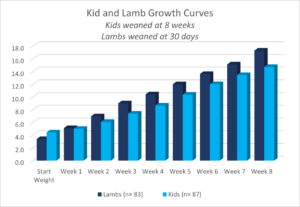
Figure 1. Comparing lamb and kid goat growth curves from data collected by Grober Nutrition Inc. (Grober Young Animal Development Centre).
Environment
Lamb Pens:
Lambs should be housed in a well-ventilated, draft-free shelter at temperatures of no less than 10ºC (50ºF). To improve livability and performance, lambs should ideally be raised in a room at 15-18ºC. Lambs bedded on straw with solid floors require 0.55m2 (0.66 square yards) of floor space per lamb.
Once established in a pen, lambs should not be moved and mixed with other lambs. It is best to feed lambs of the same age together. Teat bar systems with 4 teats can provide for a pen of 20 lambs. Commercial automatic feeders can feed 50-240 lambs per unit and so are ideal for dairy sheep operations or prolific breeds on accelerated systems. After about 10 days, larger groups can be formed and 10-25 lambs can feed off one nipple.


